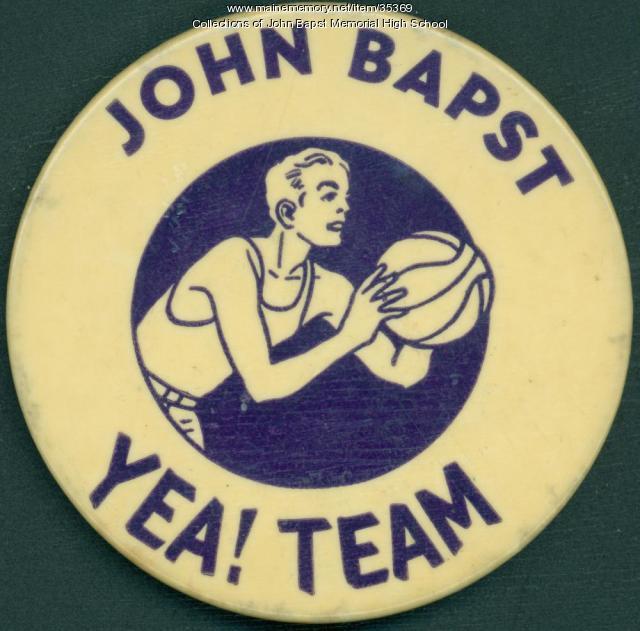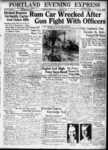Keywords: New York
- Historical Items (1091)
- Tax Records (4)
- Architecture & Landscape (43)
- Online Exhibits (132)
- Site Pages (201)
- My Maine Stories (28)
- Lesson Plans (2)
Online Exhibits
Your results include these online exhibits. You also can view all of the site's exhibits, view a timeline of selected events in Maine History, and learn how to create your own exhibit. See featured exhibits or create your own exhibit
Exhibit
Maine's natural resources -- granite, limestone and slate in particular -- along with its excellent ports made it a leader in mining and production of the valuable building materials. Stone work also attracted numerous skilled immigrants.
Exhibit
A fire and two men whose lives were entwined for more than 50 years resulted in what is now considered to be "the Jewel of Portland" -- the Austin organ that was given to the city of Portland in 1912.
Exhibit
Biddeford, Saco and the Textile Industry
The largest textile factory in the country reached seven stories up on the banks of the Saco River in 1825, ushering in more than a century of making cloth in Biddeford and Saco. Along with the industry came larger populations and commercial, retail, social, and cultural growth.
Exhibit
The paper mill on the Penobscot River in South Brewer, which became known as Eastern Fine Paper Co., began as a sawmill in 1884 and grew over the years as an important part of the economy of the region and a large presence in the landscape. Its closing in 2005 affected more than the men and women who lost their jobs.
Exhibit
A Convenient Soldier: The Black Guards of Maine
The Black Guards were African American Army soldiers, members of the segregated Second Battalion of the 366th Infantry sent to guard the railways of Maine during World War II, from 1941 to 1945. The purpose of the Black Guards' deployment to Maine was to prevent terrorist attacks along the railways, and to keep Maine citizens safe during the war.
Exhibit
Margaret Chase Smith: A Historic Candidacy
When she announced her candidacy for President in January 1964, three-term Republican Senator Margaret Chase Smith became the first woman to seek the nomination of one of the two major political parties.
Exhibit
Named for the two largest things in Maine at the turn of the 20th century, Mt. Katahdin and Granger of Stetson, were known as the Largest Oxen in the World. Unable to do farm work because of their size, they visited fairs and agricultural events around the Northeast.
Exhibit
Trolleys were the cleanest and most efficient means of mass transit Maine has ever known.
Exhibit
Maine's frozen rivers and lakes provided an economic opportunity. The state shipped thousands of tons of ice to ports along the East Coast and to the West Indies that workers had cut and packed in sawdust for shipment or later use.
Exhibit
Music in Maine - Community and School Marching Bands
"… store, and played vaudeville stages in New York. Franco Bands Alphonse Cote, Lewiston, 1918Franco-American Collection, University of…"
Exhibit
Published women authors with ties to Maine are too numerous to count. They have made their marks in all types of literature.
Exhibit
Maine's corn canning industry, as illuminated by the career of George S. Jewett, prospered between 1850 and 1950.
Exhibit
Irish Immigrants in Nineteenth Century Maine
With the popularity of all things Irish in modern America, many people have forgotten the difficulties faced by nineteenth century Irish immigrants.
Exhibit
John Dunn, 19th Century Sportsman
John Warner Grigg Dunn was an accomplished amateur photographer, hunter, fisherman and lover of nature. On his trips to Ragged Lake and environs, he became an early innovator among amateur wildlife photographers. His photography left us with a unique record of the Moosehead Lake region in the late nineteenth century.
Exhibit
Elise Fellows White: World Traveling Violin Prodigy
Elise Fellows White was a violinist from Skowhegan who traveled all over the world to share her music.
Exhibit
John Bapst High School was dedicated in September 1928 to meet the expanding needs of Roman Catholic education in the Bangor area. The co-educational school operated until 1980, when the diocese closed it due to decreasing enrollment. Since then, it has been a private school known as John Bapst Memorial High School.
Exhibit
Rum, Riot, and Reform - Bootleggers vs. Police
"… Like its large counterparts, Boston and New York, Portland also had its "rum row," an area outside the U.S."
Exhibit
Rum, Riot, and Reform - Drinking: Elegance and Debauchery
"X Coaster American, probably New York, 1855-1860 Silver and birds eye maple; silver engraved Morse Collections of Victoria Mansion: The…"
Exhibit
Workers in Maine have labored in factories, on farms, in the woods, on the water, among other locales. Many of Maine's occupations have been determined by the state's climate and geographical features.
Exhibit
Henry Wadsworth Longfellow's popularity in the 19th century is reflected by the number of images of him -- in a variety of media -- that were produced and reproduced, some to go with published works of his, but many to be sold to the public on cards and postcards.
Exhibit
A Riot of Words: Ballads, Posters, Proclamations and Broadsides
Imagine a day 150 years ago. Looking down a side street, you see the buildings are covered with posters and signs.
Exhibit
Maine Sweets: Confections and Confectioners
From chocolate to taffy, Mainers are inventive with our sweet treats. In addition to feeding our sweet tooth, it's also an economic driver for the state.
Exhibit
These stories -- that stretch from 1999 back to 1759 -- take you from an amusement park to the halls of Congress. There are inventors, artists, showmen, a railway agent, a man whose civic endeavors helped shape Portland, a man devoted to the pursuit of peace and one known for his military exploits, Maine's first novelist, a woman who recorded everyday life in detail, and an Indian who survived a British attack.
Exhibit
A City Awakes: Arts and Artisans of Early 19th Century Portland
Portland's growth from 1786 to 1860 spawned a unique social and cultural environment and fostered artistic opportunity and creative expression in a broad range of the arts, which flowered with the increasing wealth and opportunity in the city.
























